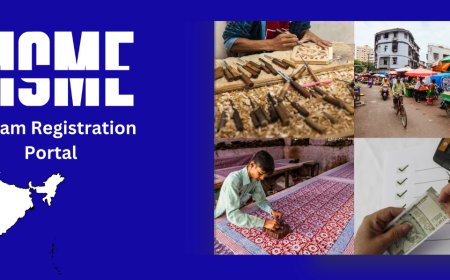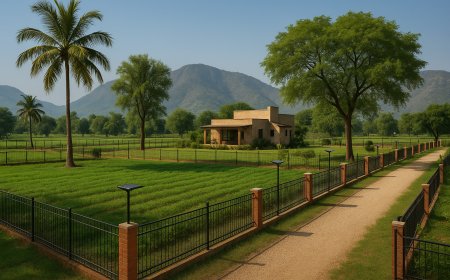What to do if you face weather problems on the Yatra
The path winds through the Himalayas, taking you to sacred destinations like Yamunotri, Gangotri, Kedarnath, and Badrinath.

Undertaking a spiritual journey like the Chardham Yatra is a dream for many pilgrims. The path winds through the Himalayas, taking you to sacred destinations like Yamunotri, Gangotri, Kedarnath, and Badrinath. However, while the spiritual reward is immense, nature in the mountains can be unpredictable. Sudden rain, landslides, snow, or fog can disrupt travel plans, create safety concerns, and challenge even the most experienced travelers.
In this guide, well walk you through what to do if you face weather problems during your Yatra, helping you stay safe, calm, and well-prepared.
1. Stay Calm and Informed
The first and most important thing to remember during any weather disruption is not to panic. Mountain weather can change rapidly, and what looks like a major setback may resolve within a few hours.
Keep yourself informed through:
-
Local authorities or tour guides: Listen to their advice carefully.
-
Official sources: Use the Uttarakhand Weather Department or the Badrinath-Kedarnath Temple Committee for real-time updates.
-
Mobile alerts: Sign up for alerts from apps like IMD, AccuWeather, or MyYatra.
2. Do Not Take Risks in Bad Weather
If you encounter heavy rain, fog, or snow, avoid trekking, driving, or proceeding further until conditions improve. Taking risks in the Himalayas can be life-threatening due to:
-
Low visibility
-
Slippery paths
-
Risk of landslides or falling rocks
-
Hypothermia in cold weather
If officials or the police advise you to halt your journey, respect the warning and wait in a safe location.
3. Take Shelter in a Safe Place
If youre on the road or near a Dham when bad weather hits:
-
Look for nearest accommodations, shelters, dharamshalas, or guesthouses.
-
Ask locals or police for recommendations on the safest spot nearby.
-
Ensure that the shelter is away from rivers, cliffs, or unstable slopes, which are vulnerable to floods and landslides.
Always carry a basic emergency kit, including:
-
Flashlight and extra batteries
-
Emergency medicines
-
Dry snacks
-
Power bank
-
Warm clothes and rain gear
4. Communicate with Family and Tour Operators
Once youre safe:
-
Inform your family or emergency contacts about your location and condition.
-
Stay in touch with your tour operator or driver, if traveling in a group.
-
If you're solo, inform local police or temple authorities of your presence.
Lack of communication often causes unnecessary panic among loved ones. Keeping them updated helps avoid stress and makes rescue easier if needed.
5. Know What to Expect During Specific Months
Weather problems are more common during certain periods:
-
May-June: Snow melts, causing flooding and landslides.
-
July-August: Monsoon brings heavy rains and frequent roadblocks.
-
September-October: Cooler but relatively stable weather.
If your Yatra is during the monsoon, be mentally prepared for delays. Build an extra 12 days into your itinerary for flexibility.
6. Understand Common Weather Issues and Their Solutions
Here are a few common weather-related problems and how to handle them:
a. Heavy Rainfall or Cloudbursts
-
Stay indoors, preferably at higher ground.
-
Avoid rivers, bridges, or low-lying areas.
-
If stranded in a vehicle, dont try to cross flooded roads.
b. Landslides
-
Do not walk or drive through landslide-prone zones during or immediately after rain.
-
Stay updated with road conditions. Authorities often clear debris within hours to a day.
-
Find alternate routes if advised.
c. Snowfall or Freezing Conditions
-
Stay warm with thermal layers and blankets.
-
Avoid going out alone.
-
Drink warm water and eat light but frequent meals.
d. Low Visibility Due to Fog or Mist
-
Avoid driving or trekking.
-
Wait until visibility clears.
-
Use headlights and hazard lights if driving slowly is necessary.
7. Insurance and Emergency Contacts
Before starting your Yatra:
-
Consider buying travel insurance that covers weather-related cancellations and medical emergencies.
-
Keep a list of emergency numbers, including:
-
Uttarakhand State Disaster Response Force (SDRF)
-
Local police stations
-
Local hospital or medical aid center
-
Helicopter service (if using air transport)
In case of an emergency evacuation due to weather, your insurance or tour operator may assist.
8. Travel with Essentials for Weather Troubles
Pack smartly with items like:
-
Waterproof bags or rain covers
-
Umbrellas or ponchos
-
Extra woolen clothes, socks, and gloves
-
Dry fruits and packaged snacks
-
Emergency blankets
This gear will help you stay dry, warm, and nourished even during an unexpected halt.
9. Use Helicopter or Jeep Services If Needed
If bad weather blocks road access, helicopter services may resume once conditions clear. Stay in touch with the helipad authorities.
For short distances where road access is temporarily affected, jeep services operated by locals might offer safe transport once the path is cleared.
But never try to force your way through always wait for official clearance.
10. Rescheduling or Cancelling Plans
Sometimes, the weather may make it impossible to complete your Yatra within your planned schedule. In such cases:
-
Be mentally prepared to reschedule or return.
-
Prioritize safety over completion.
-
Most reputable tour operators allow flexible bookings or partial refunds.
Remember: Your devotion isnt measured by completing the route in dangerous conditions its reflected in your humility, patience, and faith.
Final Thoughts
Weather problems are part and parcel of any mountain journey. The Himalayas are beautiful but demanding and respecting natures power is essential. The key is to plan smart, stay alert, and be flexible. With the right mindset and precautions, even weather delays can become part of a meaningful and memorable Yatra experience.
So, if clouds gather or rain halts your progress, dont lose heart. Stay safe, stay spiritual and let the journey continue at the right time.
Jai Kedarnath! Jai Badrinath! May your Yatra be safe and fulfilling.



























